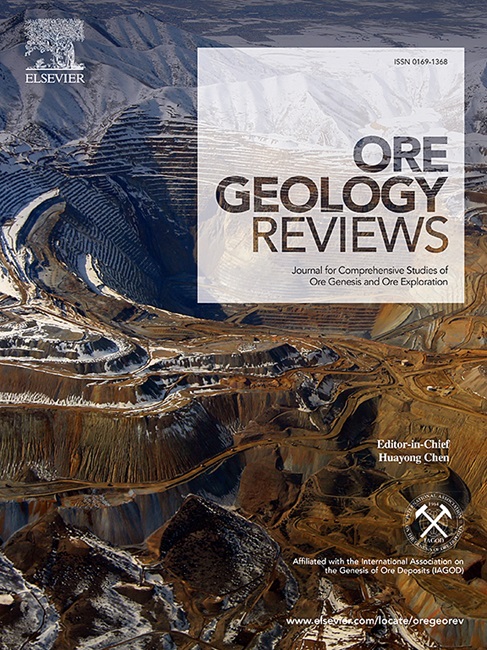Polyphase deformation history and its structural controls on auriferous quartz vein stockwork in the Xiaoqinling district, southern margin of the North China Craton
IF 3.2
2区 地球科学
Q1 GEOLOGY
引用次数: 0
Abstract
“Structural control” is a crucial point in revealing the genesis mechanism and distribution patterns of vein-type gold deposits. Being the second largest gold producer in China, the Xiaoqinling region has experienced complex and polyphase structural deformations. However, the persistent absence of research on the regional structural deformation sequences and superimposed relationships have posed significant challenges to understanding the ore-controlling structural model, timing of gold mineralization, and dynamic mechanisms. In this contribution, we established an Early Paleoproterozoic to Late Mesozoic structural deformational-event framework (D1–D5) and proposed an ore-controlling structural model by integrating an analysis of the geometry, kinematics, overprinting, and crosscutting relationships of structures at different deformation events, the spatial coupling relationship between gold veins and structures with various orientations, and prior geochronological data. The D1–D4 deformation structures initially established the EW–NW, NE and NS-oriented pre-existing ore-controlling structures framework. The reactivation of pre-existing structures (D1–D4) during the D5 deformation event (gold mineralization period), concurrently giving rise to new NE-trending extensional structures accompanying the tectonic evolution of the metamorphic core complex (MCC), collectively created a multi-directional structural network connecting mineralizing fluids to structural traps, within which auriferous quartz veins emplaced, and displaying a phenomenon of multi-directional intertwining. Combined with previous studies, new structural analysis showing that gold mineralization in the Xiaoqinling area falls within the Early Cretaceous, peaking at 126 Ma, aligning with the timing of rapid crustal uplift, generated in a backarc extension setting induced by the roll-back following the flat subduction of the Paleo-Pacific slab. Our study highlights the crucial role of reactivated pre-existing structures in controlling gold mineralization, demonstrating that structural deformation analysis is essential for understanding the genesis and mechanisms of complex gold district, and suggests that the ductile–brittle shear zones trending in both E–W and NE directions within the middle part of the Xiaoqinling district are crucial positioning areas for exploration of deep-seated gold deposits.

求助全文
约1分钟内获得全文
求助全文
来源期刊

Ore Geology Reviews
地学-地质学
CiteScore
6.50
自引率
27.30%
发文量
546
审稿时长
22.9 weeks
期刊介绍:
Ore Geology Reviews aims to familiarize all earth scientists with recent advances in a number of interconnected disciplines related to the study of, and search for, ore deposits. The reviews range from brief to longer contributions, but the journal preferentially publishes manuscripts that fill the niche between the commonly shorter journal articles and the comprehensive book coverages, and thus has a special appeal to many authors and readers.
 求助内容:
求助内容: 应助结果提醒方式:
应助结果提醒方式:


